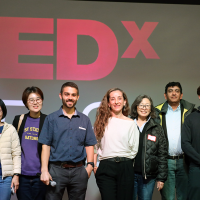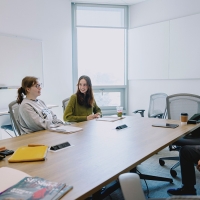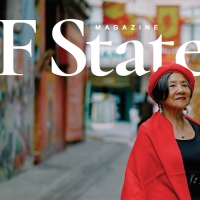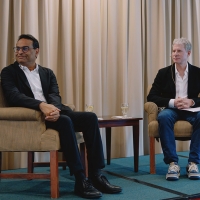SF State students share their science through art
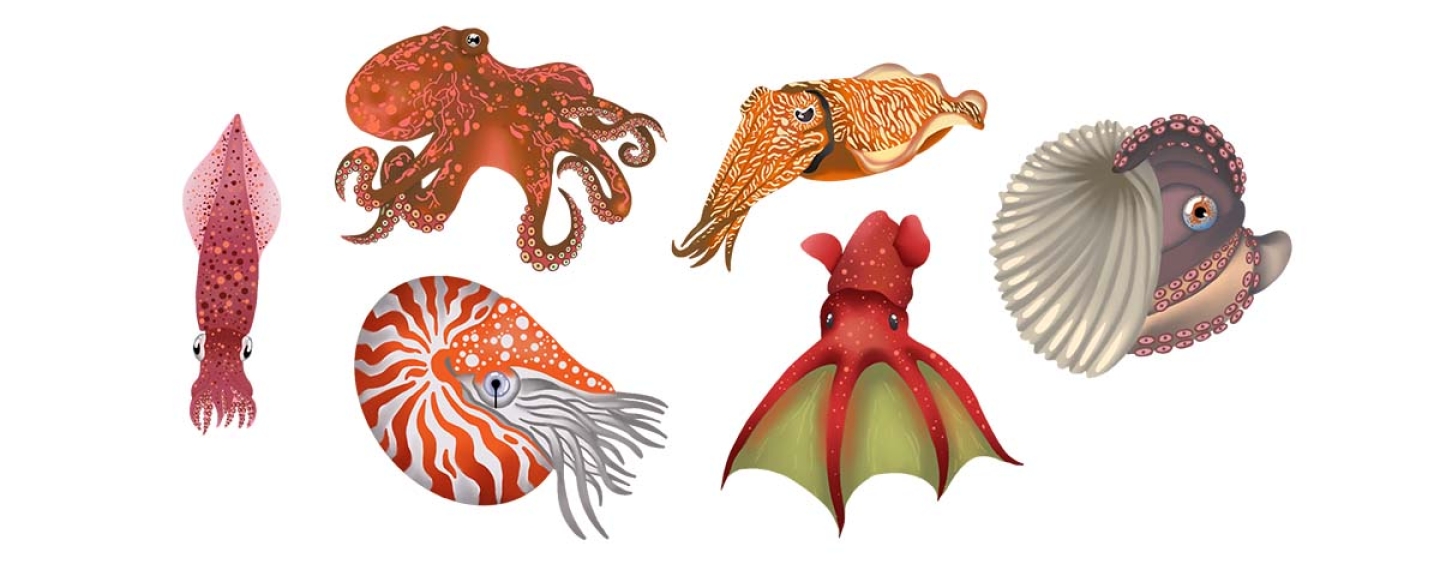
A new EOS Center program is supporting artistic marine scientists and expanding science education opportunities
“Pictures really do paint a thousand words, regardless of the language you speak or your scientific knowledge. The pictures, [they’re] universal,” Diana Neacsu said of her scientific illustrations. A San Francisco State University graduate student researcher and artist, she was part of the inaugural 2023 cohort supported by a new scientific illustration grant of the University’s Estuary & Ocean Science (EOS) Center.
The program began due to a $10,000 grant from the Maxwell|Hanrahan Foundation specifically to support scientific artists and was recently funded for a second year. Recruiting for the 2024 spring semester cohort, the EOS Center program coordinators emphasized that the program is not restricted to a particular major or students affiliated with the EOS Center. Any student researcher in Marine and Estuarine Sciences was encouraged to apply.
“We are thrilled to be able to offer these funds as a way to support science communication skills for the University’s budding marine scientists,” said EOS Center Interim Executive Director Katharyn Boyer. “We want our graduates to not only be trained in the rigors of cutting-edge science but to have tools they can use to share how and why they do their work.”
Last year, the EOS Center offered three one-year fellowships to student researchers with a penchant for art. Inspired by student enthusiasm, the EOS Center gathered additional donated funds to support a fourth student. Faculty helped identify and nominate students working on marine or estuarine science research. Students received funding to work with their mentor to complete the project.
Neacsu, a graduate student in Physiology and Behavioral Biology, designed a colorful 24-page manual bedecked with dozens of illustrations of squid, octopuses and other creatures studied by her adviser Associate Professor Robyn Crook’s research group. Neacsu filled the manual with detailed illustrations on animal husbandry and experimental protocols with the goal of helping student researchers joining the lab. There’s a steep learning curve for students learning research, she explained.
Others in the 2023 cohort produced a variety of work. One student simplified the complex food web of longfin smelt into a graphic illustration. Another student created cartoons representing several EOS Center labs, designing icons with whales, otters, oysters and more.
“Creating visual interpretations of science can be a powerful way to reinforce concepts not just for the viewer but for the scientist-artist,” Boyer said.
Though her project was for scientists, Neacsu has plans to reach other audiences. Her goal is to freelance and use her art to educate a variety of audiences. Frustrated with the way academia and the sciences can exclude people, she sees art as an easier way to capture people’s attention.
“A lot of people are afraid of science or don’t like science or were belittled. I am totally sympathetic,” said Neacsu, explaining that academia can be quite gated. She hopes to develop her illustrations to help draw in non-expert audiences. She hopes scientific illustrations could capture the interest of grade-school children at stages when their interests veer away from science. “I think illustrations are a great way to break that barrier. Who doesn’t [prefer] a pretty picture [instead of] a block of text that’s full of jargon and heavy. It turns people off.”
For Neascu, the connection between art and science was natural. She grew up loving the “creepy crawlies” and doing art for fun. In high school, she joined an art-intensive school where she sharpened her artistic chops. But she knew she wanted to become a researcher. It’s a path that allows her to channel her creativity and get continuous inspiration.
“I get art-blocked often. Months go by where I don’t produce any art. But with academia and research, I feel like I can always keep going at it,” she explained. “As I was doing research, I realized that I could incorporate my art, improve my research and expand my communication with others by using my art as a tool.”
Tags
